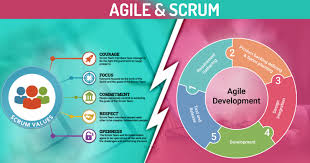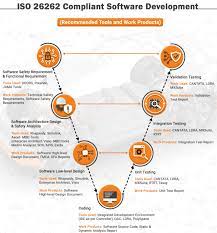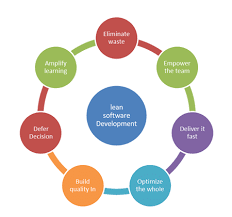Article: Incremental Software Development
Understanding Incremental Software Development
Incremental software development is a methodology that involves breaking down the software development process into smaller, manageable segments. Instead of trying to deliver the entire product at once, incremental development focuses on delivering a series of functional components or features over time.
One of the key benefits of incremental software development is its flexibility. By dividing the project into smaller increments, developers can adapt to changing requirements and feedback more easily. This iterative approach allows for continuous improvement and refinement throughout the development cycle.
Another advantage of incremental development is its ability to provide early and frequent deliverables. This means that stakeholders can see tangible progress at regular intervals, which helps in managing expectations and ensuring that the final product meets their needs.
Furthermore, incremental software development promotes collaboration and communication among team members. By working on smaller increments together, developers can share knowledge, identify issues early on, and make necessary adjustments in a timely manner.
It’s important to note that incremental development requires careful planning and prioritization of features. The team must have a clear understanding of the project scope and goals to ensure that each increment contributes meaningfully to the overall product.
In conclusion, incremental software development offers a flexible and iterative approach to building software products. By focusing on delivering small increments of functionality over time, teams can adapt to changes more effectively, provide early deliverables for feedback, promote collaboration, and ultimately deliver a high-quality product that meets stakeholders’ expectations.
Advantages of Incremental Software Development: Flexibility, Early Deliverables, Continuous Improvement, Team Collaboration, Early Issue Detection, and High-Quality Outcomes
- Flexibility to adapt to changing requirements
- Early and frequent deliverables for stakeholders
- Continuous improvement and refinement throughout development cycle
- Promotes collaboration and communication among team members
- Easier identification of issues early on in the process
- High-quality final product that meets stakeholders’ expectations
7 Challenges of Incremental Software Development: Navigating Complexity, Integration, and Coordination
- Increased complexity due to managing multiple increments simultaneously
- Potential for inconsistent integration between incremental components
- Difficulty in estimating project timelines accurately
- Risk of overlooking dependencies between increments, leading to issues later on
- Possible challenges in maintaining a cohesive overall architecture with incremental additions
- Higher coordination efforts required among team members working on different increments
- Limited visibility into the final product until all increments are completed
Flexibility to adapt to changing requirements
One significant advantage of incremental software development is its inherent flexibility to adapt to changing requirements. By breaking down the project into smaller, manageable segments, developers can easily incorporate new features or modifications as needed throughout the development process. This adaptive approach enables teams to respond swiftly to evolving customer needs, market trends, or unforeseen challenges, ensuring that the final product remains aligned with stakeholders’ expectations and delivers maximum value.
Early and frequent deliverables for stakeholders
One significant advantage of incremental software development is the provision of early and frequent deliverables for stakeholders. By breaking down the project into smaller increments and delivering functional components regularly, stakeholders can see tangible progress at various stages of development. This allows them to provide feedback, make informed decisions, and ensure that the final product aligns with their expectations. Ultimately, the transparency and visibility provided by early and frequent deliverables enhance communication between the development team and stakeholders, leading to a more successful and satisfying end product.
Continuous improvement and refinement throughout development cycle
One significant advantage of incremental software development is the opportunity for continuous improvement and refinement throughout the development cycle. By breaking down the project into smaller increments and delivering functional components iteratively, developers can receive feedback early on, identify areas for enhancement, and make necessary adjustments in a timely manner. This iterative process allows for ongoing refinement of the product, ensuring that it evolves to meet changing requirements and stakeholder expectations as the project progresses.
Incremental software development promotes collaboration and communication among team members by encouraging them to work together on smaller increments of the project. This collaborative approach allows team members to share knowledge, insights, and feedback more effectively, leading to better problem-solving, increased innovation, and a stronger sense of teamwork. By fostering open communication and cooperation, incremental development helps ensure that all team members are aligned towards the common goal of delivering a successful software product.
Easier identification of issues early on in the process
One significant benefit of incremental software development is the easier identification of issues early on in the process. By breaking down the project into smaller increments and delivering functional components iteratively, development teams can quickly spot any issues or challenges that arise. This early detection allows for timely resolution, preventing potential problems from escalating and impacting the overall project timeline and quality. Identifying and addressing issues at an early stage ultimately leads to a more efficient and successful software development process.
High-quality final product that meets stakeholders’ expectations
Incremental software development’s focus on delivering small increments of functionality over time leads to a high-quality final product that aligns closely with stakeholders’ expectations. By continuously refining and improving each increment based on feedback and changing requirements, teams can ensure that the end product meets the needs and desires of stakeholders. This iterative approach allows for early identification and resolution of issues, resulting in a final product that not only meets but exceeds stakeholders’ expectations in terms of functionality, usability, and overall quality.
Increased complexity due to managing multiple increments simultaneously
One significant drawback of incremental software development is the increased complexity that arises from managing multiple increments simultaneously. As developers work on different features or components in parallel, coordinating dependencies, ensuring compatibility, and maintaining consistency across increments can become challenging. This complexity may lead to issues such as integration conflicts, version control problems, and difficulty in tracking changes effectively. As a result, teams may experience delays in delivery, reduced overall productivity, and heightened risk of errors or inconsistencies in the final product. Effective project management strategies and clear communication are essential to mitigate this con and ensure the successful implementation of incremental development practices.
Potential for inconsistent integration between incremental components
One significant drawback of incremental software development is the potential for inconsistent integration between incremental components. As each component is developed and integrated separately, there is a risk that they may not seamlessly fit together when combined into the final product. This can lead to compatibility issues, bugs, and inefficiencies that may require additional time and effort to resolve. Ensuring consistent integration and synchronization between incremental components becomes crucial to maintain the overall integrity and functionality of the software throughout the development process.
Difficulty in estimating project timelines accurately
One significant challenge associated with incremental software development is the difficulty in estimating project timelines accurately. Since the development process is broken down into smaller increments that evolve over time based on feedback and changing requirements, it can be challenging to predict the exact timeline for completing the entire project. This uncertainty in timelines can make it difficult for project managers and stakeholders to plan resources effectively and set realistic expectations regarding delivery dates. As a result, this lack of precise timeline estimation may lead to delays or disruptions in the development process, impacting overall project management and success.
Risk of overlooking dependencies between increments, leading to issues later on
One significant drawback of incremental software development is the potential risk of overlooking dependencies between increments, which can result in issues surfacing later in the development process. When individual increments are developed without considering how they interact with each other or rely on specific components, it may lead to compatibility issues, integration challenges, or functionality gaps that become apparent only when attempting to combine all the increments into a cohesive product. This oversight can result in delays, rework, and added complexity as developers address these dependencies retroactively, highlighting the importance of thorough planning and coordination throughout the incremental development cycle.
Possible challenges in maintaining a cohesive overall architecture with incremental additions
One significant challenge of incremental software development is the potential difficulty in maintaining a cohesive overall architecture when adding increments over time. As new features or components are introduced in a piecemeal fashion, there is a risk of inconsistencies or conflicts arising within the system’s architecture. Without careful planning and oversight, these incremental additions may lead to a fragmented structure that lacks coherence and scalability. Ensuring that each increment aligns with the overarching architectural design while accommodating future growth can be a complex task that requires continuous evaluation and adjustment to prevent architectural degradation.
Higher coordination efforts required among team members working on different increments
One significant challenge of incremental software development is the increased coordination efforts needed among team members working on different increments. As the project is divided into smaller segments, team members working on separate increments must ensure that their work aligns cohesively with the overall project goals and that dependencies between increments are managed effectively. This higher level of coordination can lead to potential communication gaps, delays in decision-making, and the need for continuous synchronization efforts to maintain consistency across all increments.
Limited visibility into the final product until all increments are completed
One significant drawback of incremental software development is the limited visibility into the final product until all increments are completed. Since the project is divided into smaller segments that are developed incrementally, stakeholders may not have a clear picture of the end product until all increments are integrated and finalized. This lack of visibility can make it challenging to assess the overall progress, evaluate the coherence of different components, and ensure that the final product meets all requirements effectively. It may also lead to uncertainties regarding the project timeline and budget, as stakeholders may not have a comprehensive understanding of the final scope until all increments are delivered and integrated.











